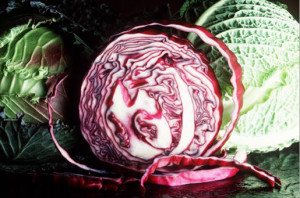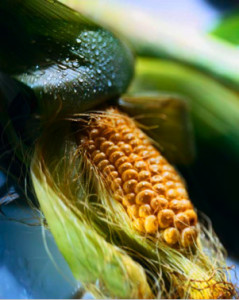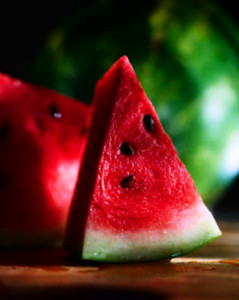Tasty and Healthy!
go.ncsu.edu/readext?233584
en Español / em Português
El inglés es el idioma de control de esta página. En la medida en que haya algún conflicto entre la traducción al inglés y la traducción, el inglés prevalece.
Al hacer clic en el enlace de traducción se activa un servicio de traducción gratuito para convertir la página al español. Al igual que con cualquier traducción por Internet, la conversión no es sensible al contexto y puede que no traduzca el texto en su significado original. NC State Extension no garantiza la exactitud del texto traducido. Por favor, tenga en cuenta que algunas aplicaciones y/o servicios pueden no funcionar como se espera cuando se traducen.
Português
Inglês é o idioma de controle desta página. Na medida que haja algum conflito entre o texto original em Inglês e a tradução, o Inglês prevalece.
Ao clicar no link de tradução, um serviço gratuito de tradução será ativado para converter a página para o Português. Como em qualquer tradução pela internet, a conversão não é sensivel ao contexto e pode não ocorrer a tradução para o significado orginal. O serviço de Extensão da Carolina do Norte (NC State Extension) não garante a exatidão do texto traduzido. Por favor, observe que algumas funções ou serviços podem não funcionar como esperado após a tradução.
English
English is the controlling language of this page. To the extent there is any conflict between the English text and the translation, English controls.
Clicking on the translation link activates a free translation service to convert the page to Spanish. As with any Internet translation, the conversion is not context-sensitive and may not translate the text to its original meaning. NC State Extension does not guarantee the accuracy of the translated text. Please note that some applications and/or services may not function as expected when translated.
Collapse ▲With summer in full swing, there is nothing better than delicious vegetables from the garden. As local farms begin their peak produce season, isn’t it time to take advantage of eating more fresh fruits and vegetables? A diet high in fruits and vegetables is important for managing weight and preventing many chronic diseases including diabetes, heart disease and some cancers.
On your next trip to the local produce stand or farmers market, remember that you are not only supporting our local growers and business owners, you are taking steps to improve your health. Check out these healthy reasons to eat more fresh vegetables and fruits, along with tips to select and store some of our local favorites.
 Cabbage
Cabbage
Cabbage is a versatile vegetable used in coleslaw, sauerkraut and many German recipes. Cabbage is rich in phytonutrients, which are thought to be responsible for the reduced cancer risk for those who consume as little as one cup serving per day. Cabbage has also been shown to contain compounds that kill harmful bacteria, soothe ulcers and improve circulation. Its high vitamin C content helps stimulate the immune system. Cabbage is also an excellent source of fiber, folate, vitamin B and omega-3 fatty acids.
When selecting cabbage, heads should be firm and dense with crisp, colorful outer leaves and free of cracks and worm damage. Avoid precut cabbage since vitamin C content is lost once the heads are cut. Whole cabbage heads stored in a plastic bag in the crisper drawer of the refrigerator will last up to two weeks.
If the cabbage leaves are turning black after being cut, consider switching knives. The phytonutrients in the leaves react with carbon steel, but not stainless steel.
 Corn
Corn
Most cookout menus include grilled corn. Corn is a good source of several nutrients and vitamins, including niacin, vitamin C and folic acid. Corn has about 85 calories per ear (without the butter). Corn is often thought to be hard to digest, but it is actually high in insoluble fiber.
Corn is fully ripe when it has bright green, stiff, moist, husks. Individual kernels should be easily distinguished by pressing gently against the husk. Corn should be eaten as soon as possible for best flavor, preferably the same day it is purchased. Refrigerate the corn until ready to cook. Corn can be stored for a day or two in a perforated plastic bag in the refrigerator. Just keep in mind the sweet flavor begins to decline quickly as the natural sugars are converted to less tasty starches. It is not a good idea to shuck the cornhusks until they are ready to use.
Green Beans
A southern past time is sitting on the porch “snapping” green beans. Green beans are a good source of antioxidants and protect against inflammation. These vegetables are also an excellent source of free radical-scavenging vitamin C and manganese, and bone-building vitamin K. Green beans provide silicon, a mineral needed for bone health and development or healthy connective tissues.
Look for beans that have a smooth feel and firm texture. They should “snap” when broken. Choose beans that are a vibrant green color and are free from brown spots or bruises. Also look for purple and yellow varieties. Unwashed fresh beans can be stored in a plastic bag in the refrigerator crisper for up to seven days.
Okra
Okra is a guilty pleasure when fried, but can be prepared in other ways to reap the many healthy benefits. Okra is high in fiber and has only 25 calories per ½ cup serving. Fresh okra is high in vitamin A and folate. Okra is also a good source of antioxidants, and provides a healthy dose of fiber and vitamins C and B.
The tastiest okra is harvested when it’s young; choose immature pods that are about 3 inches long. Bigger okra may be too mature and will be tougher and not as tasty. Avoid pods with an over-ripened, sunken appearance, discolored spots or cuts. Store unwashed okra in a perforated plastic bag in the refrigerator, but only for a couple of days. Okra perishes quickly.
 Watermelon
Watermelon
Watermelon is the finishing touch to any picnic or summer outing. Watermelon not only tastes good, it’s good for you. It has no fat or cholesterol and is an excellent source of vitamins, fiber and potassium. Watermelon has a higher concentration of cancer-fighting lycopene than any other fruit or vegetable.
When selecting a watermelon, look for a nice symmetrical shape and firm fruit, free from bruises or cuts or dents. A juicy watermelon will be heavy for its size; it’s 92 percent water, after all. A pale yellow patch on the underside is a good sign that the melon is ripe.
Keep cut melon at room temperature for 2 hours or less. Refrigerate leftover melon in a sealed container for no more than 3 to 4 days. Cut melons will keep for seven to 10 days at room temperature. Be careful not to store them too long or they’ll lose flavor.
Enjoy the longer days and warmer nights of summer and don’t forget to indulge in the many delicious and nutritious foods from the garden. Next time you are shopping at a local produce stand and the Swain County Farmers Market, pick up these vegetables to make this tasty recipe.
Farmers Market Frittata
-
- 1 cup chopped seasonal vegetables (such as asparagus, broccoli, sugar snap peas, spinach or peppers)
- ½ cup chopped cooked chicken or salmon (optional)
- ¼ cup chopped tomatoes
- ¼ cup chopped onions
- ¼ teaspoon dried tarragon
- 1 Tablespoon butter
- 4 farm-fresh eggs, lightly beaten
- Fresh goat cheese (optional)
Directions: Sauté vegetables, chicken, tomato, onion and tarragon in butter in a medium saucepan or electric frying pan over medium heat until vegetables are tender-crisp. Pour eggs evenly over all ingredients. Sprinkle with cheese if desired. Cover and cook 6-8 minutes or until firm on bottom and almost set on top. Cut into wedges to serve. Serves 4.
LIKE us on Facebook.com/SwainCountyCooperativeExtension




